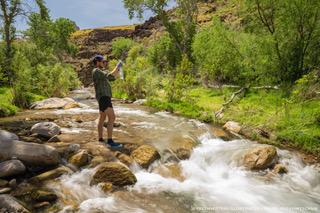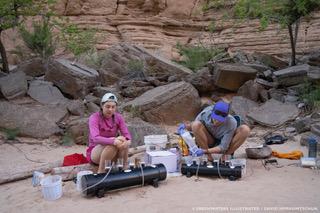eDNA Methods
eDNA Methods

Collecting water samples at a Colorado River tributary.
We use eDNA metabarcoding to study aquatic invertebrate community ecology and landscape genetics in desert rivers such as the Colorado River in Grand Canyon and the Verde River. Utilizing trace DNA captured from water samples, we can quantify the composition of communities across gradients of environmental and spatial heterogeneity. Specifically, we are interested in how tributary confluences impact invertebrate community diversity. We are also interested in using the genetic data captured with eDNA to investigate patterns of gene flow in entire communities. This will allow for the identification of species-agnostic barriers and pathways for gene flow, and enables a direct bridge between community ecology and population genetics. These avenues of research will help to uncover patterns of invertebrate dispersal in desert rivers, with implications for both basic community and population genetic research and applied management of these fragile desert ecosystems.

PhD students Jared Freedman and Angelika Kurthen filter river water to capture eDNA.